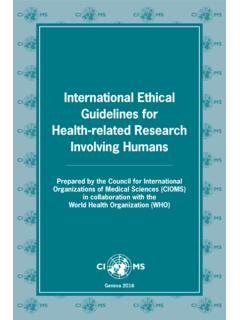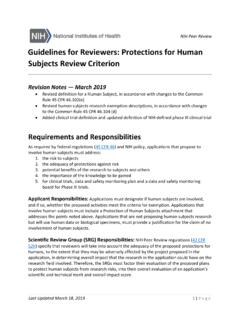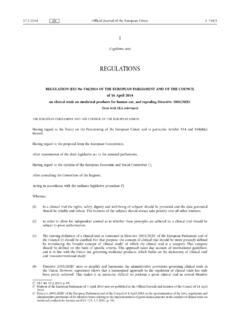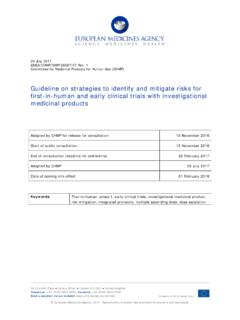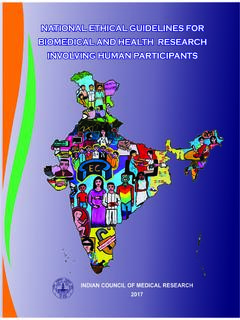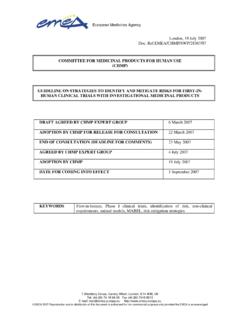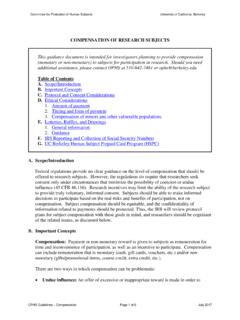Transcription of CHOICE OF CONTROL GROUP AND RELATED ISSUES IN C T E10
1 INTERNATIONAL CONFERENCE ON HARMONISATION OF TECHNICAL REQUIREMENTS FOR REGISTRATION OF PHARMACEUTICALS FOR HUMAN USE ICH HARMONISED TRIPARTITE GUIDELINE CHOICE OF CONTROL GROUP AND RELATED ISSUES IN clinical TRIALS E10 Current Step 4 version dated 20 July 2000 This Guideline has been developed by the appropriate ICH Expert Working GROUP and has been subject to consultation by the regulatory parties, in accordance with the ICH Process. At Step 4 of the Process the final draft is recommended for adoption to the regulatory bodies of the European Union, Japan and USA. E10 Document History First Codification History Date New Codification November 2005 E10 Approval by the Steering Committee under Step 2 and release for public consultation.
2 7 May 1999 E10 Current Step 4 version E10 Approval by the Steering Committee under Step 4 and recommendation for adoption to the three ICH regulatory bodies. 20 July 2000 E10 CHOICE OF CONTROL GROUP AND RELATED ISSUES IN clinical TRIALS ICH Harmonised Tripartite Guideline Having reached Step 4 of the ICH Process at the ICH Steering Committee meeting on 20 July 2000, this guideline is recommended for adoption to the three regulatory parties to ICH TABLE OF CONTENTS 1. 1 General Scheme and Purpose of 1 Purpose of CONTROL 2 2 3 Types of 3 Placebo Concurrent 4 No-treatment Concurrent 4 Dose-response Concurrent 4 Active (Positive) Concurrent 5 External CONTROL (Including Historical CONTROL ).. 5 Multiple CONTROL 5 Purposes of clinical Trials and RELATED 5 Evidence of 5 Comparative Efficacy and 6 Fairness of 6 6 Patient 7 Selection and Timing of 7 Assay 7 Assay Sensitivity in Non-inferiority or Equivalence 8 Historical Evidence of Sensitivity to Drugs Effects and Choosing the Non-inferiority 9 Appropriate Trial 11 Assay Sensitivity in Trials Intended to Demonstrate 12 2.
3 DETAILED CONSIDERATION OF TYPES OF 13 Placebo 13 Description (See Section ).. 13 Ability to Minimize Bias .. 13 i CHOICE of CONTROL GROUP and RELATED ISSUES in clinical Trials Ethical 13 Usefulness of Placebo-controlled Trials and Validity of Inference in Particular 14 Modifications of Design and Combinations with Other Controls That Can Resolve Ethical, Practical, or Inferential 15 Additional CONTROL 15 Three-arm Trial; Placebo and Active 15 Additional 15 Factorial 15 Other Modifications of Study 15 Add-on Study, Placebo-controlled; Replacement 15 "Early Escape ; Rescue 16 Limited Placebo 16 Randomized 16 Other Design 18 Advantages of Placebo-controlled 18 Ability to Demonstrate 18 Measures "Absolute" Efficacy and 18 18 Minimizing the Effect of Subject and Investigator 18 Disadvantages of Placebo-controlled Trials.
4 18 Ethical Concerns (See Sections and ) .. 18 Patient and Physician Practical 19 19 No Comparative 19 No-treatment Concurrent CONTROL (See Section ).. 19 Dose-response Concurrent CONTROL (See Section ).. 20 20 Ability to Minimize Bias .. 20 Ethical 20 Usefulness of Dose-response Studies and Validity of Inference in Particular 21 Modifications of Design and Combinations with Other Controls That Can Resolve Ethical, Practical or Inferential 21 Advantages of Dose-response 21 21 Possible Ethical 21 Disadvantages of Dose-response 21 ii CHOICE of CONTROL GROUP and RELATED ISSUES in clinical Trials Active CONTROL (See Section ) .. 22 22 Ability to Minimize Bias .. 22 Ethical 22 Usefulness of Active CONTROL Trials and Validity of Inference in Particular 23 Modifications of Design and Combinations with Other Controls That Can Resolve Ethical, Practical, or Inferential 23 Advantages of Active CONTROL 23 Ethical and Practical 23 Information 23 Disadvantages of Active CONTROL 23 Information 23 Large Sample 24 External CONTROL (Including Historical CONTROL , See Section ).
5 24 24 Ability to Minimize Bias .. 24 Ethical 25 Usefulness of Externally Controlled Trials and Validity of Inference in Particular 26 Modifications of Design and Combinations with Other Controls That Can Resolve Ethical, Practical or Inferential 26 Advantages of Externally Controlled 27 Disadvantages of Externally Controlled 27 3. CHOOSING THE CONCURRENT CONTROL 27 Table 1. Usefulness of Specific Concurrent CONTROL Types in Various 28 Figure 1 Choosing the Concurrent CONTROL for Demonstrating 29 iii 1 CHOICE OF CONTROL GROUP AND RELATED ISSUES IN clinical TRIALS 1. INTRODUCTION The CHOICE of CONTROL GROUP is always a critical decision in designing a clinical trial. That CHOICE affects the inferences that can be drawn from the trial, the ethical acceptability of the trial, the degree to which bias in conducting and analyzing the study can be minimized, the types of subjects that can be recruited and the pace of recruitment, the kind of endpoints that can be studied, the public and scientific credibility of the results, the acceptability of the results by regulatory authorities, and many other features of the study, its conduct, and its interpretation.
6 General Scheme and Purpose of Guideline The purpose of this guideline is to describe the general principles involved in choosing a CONTROL GROUP for clinical trials intended to demonstrate the efficacy of a treatment and to discuss RELATED trial design and conduct ISSUES . This guideline does not address the regulatory requirements in any region, but describes what trials using each design can demonstrate. The general principles described in this guideline are relevant to any controlled trial but the CHOICE of CONTROL GROUP is of particularly critical importance to clinical trials carried out during drug development to demonstrate efficacy. The CHOICE of the CONTROL GROUP should be considered in the context of available standard therapies, the adequacy of the evidence to support the chosen design, and ethical considerations.
7 This guideline first describes the purpose of the CONTROL GROUP and the types of CONTROL groups commonly employed to demonstrate efficacy. It then discusses the critical design and interpretation ISSUES associated with the use of an active CONTROL trial to demonstrate efficacy by showing non-inferiority or equivalence to the CONTROL (Section ). There are circumstances in which a finding of non-inferiority cannot be interpreted as evidence of efficacy. Specifically, for a finding of non-inferiority to be interpreted as showing efficacy, the trial needs to have had the ability to distinguish effective from less effective or ineffective treatments. The guideline then describes trials using each kind of CONTROL GROUP in more detail (see sections 2. - ) and considers, for each: Its ability to minimize bias Ethical and practical ISSUES associated with its use Its usefulness and the quality of inference in particular situations Modifications of study design or combinations with other controls that can resolve ethical, practical, or inferential concerns Its overall advantages and disadvantages Several other ICH guidelines are particularly relevant to this guideline: E3: Structure and Content of clinical Study Reports E4: Dose-Response Information to Support Drug Registration E5: Ethnic Factors E6: Good clinical Practice: Consolidated Guideline E8: General Considerations for clinical Trials E9.
8 Statistical Principles for clinical Trials CHOICE of CONTROL GROUP and RELATED ISSUES in clinical Trials 2 Although trials using any of the CONTROL groups described and discussed in this guideline may be useful and acceptable in clinical trials that serve as the basis for marketing approval in at least some circumstances, they are not equally appropriate or useful in every cases. The general approach to selecting the type of CONTROL is outlined in Section 3., Figure 1, and Table 1. Although this guideline is focused primarily on clinical trials intended to assess the efficacy of a treatment, many of the considerations discussed also apply to the assessment of specific safety hypotheses and to safety or efficacy comparisons of two treatments. Purpose of CONTROL GROUP CONTROL groups have one major purpose: to allow discrimination of patient outcomes (for example, changes in symptoms, signs, or other morbidity) caused by the test treatment from outcomes caused by other factors, such as the natural progression of the disease, observer or patient expectations, or other treatment.
9 The CONTROL GROUP experience tells us what would have happened to patients if they had not received the test treatment or if they had received a different treatment known to be effective. If the course of a disease were uniform in a given patient population, or predictable from patient characteristics such that outcome could be predicted reliably for any given subject or GROUP of subjects, results of treatment could simply be compared with the known outcome without treatment. For example, one could assume that pain would have persisted for a defined time, blood pressure would not have changed, depression would have lasted for a defined time, tumors would have progressed, or the mortality after an acute infarction would have been the same as previously seen. In unusual cases, the course of illness is in fact predictable in a defined population and it may be possible to use a similar GROUP of patients previously studied as a historical CONTROL (see section ).
10 In most situations, however, a concurrent CONTROL GROUP is needed because it is not possible to predict outcome with adequate accuracy or certainty. A concurrent CONTROL GROUP is one chosen from the same population as the test GROUP and treated in a defined way as part of the same trial that studies the test treatment, and over the same period of time. The test and CONTROL groups should be similar with regard to all baseline and on-treatment variables that could influence outcome, except for the study treatment. Failure to achieve this similarity can introduce a bias into the study. Bias here (and as used in ICH E9) means the systematic tendency of any aspects of the design, conduct, analysis, and interpretation of the results of clinical trials to make the estimate of a treatment effect deviate from its true value. Randomization and blinding are the two techniques usually used to minimize the chance of such bias and to ensure that the test treatment and CONTROL groups are similar at the start of the study and are treated similarly in the course of the study (see ICH E9).
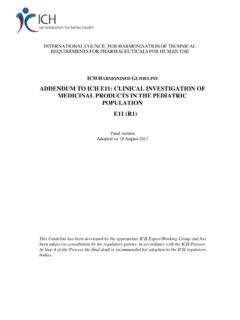
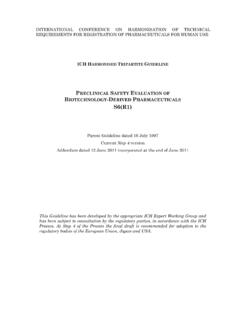
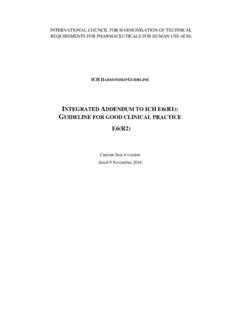
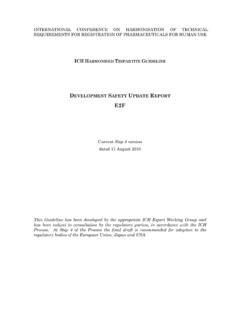
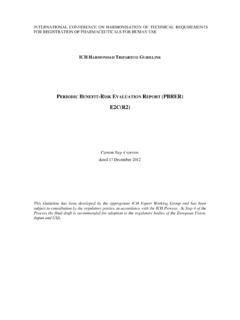
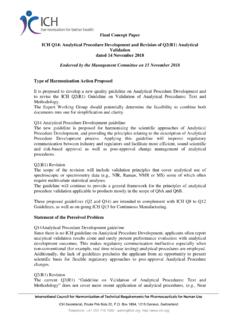
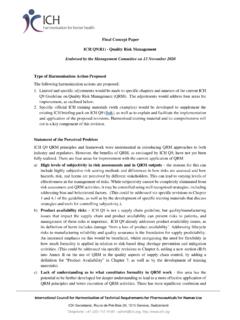
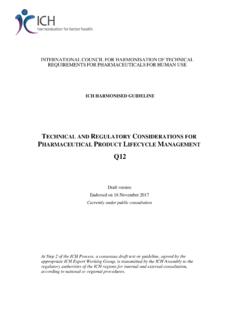
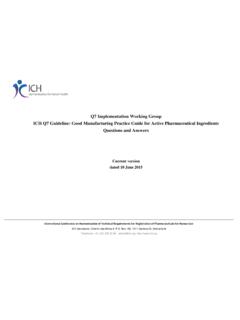
![[ICH E2F] [EXAMPLE DSUR – PHASE III INVESTIGATIONAL …](/cache/preview/e/7/a/2/e/6/3/0/thumb-e7a2e63043c4463724e748eb98faa3a7.jpg)
